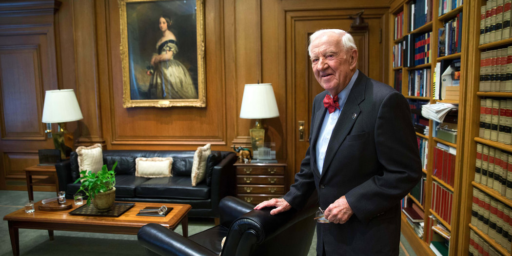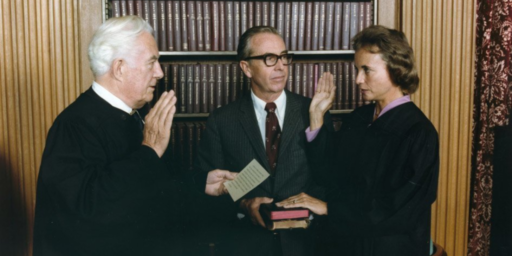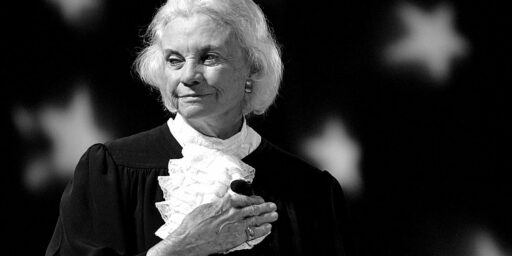Senators Kyl and Cornyn Mentioned As Possible Justices
President Bush may name a Republican Senator to the Supreme Court if a vacancy occurs, according to the Associated Press.
Senators Mentioned As Possible Justices (AP)
If there is a Supreme Court vacancy this summer, President Bush may look no farther than the Capitol for a member of Congress who can be confirmed quickly. Past presidents have done it, more than two dozen times. While admittedly long shots, GOP Sens. Jon Kyl of Arizona and John Cornyn of Texas are being talked up by some conservatives as possible nominees for the high court. Seen as most likely to step down is Chief Justice William Rehnquist, who at 80 is fighting cancer. Retirement also might be attractive option for Justices Sandra Day O’Connor, 75, and John Paul Stevens, 85.
Kyl is a stalwart pro-business conservative and a senior member of the Senate Judiciary Committee. Cornyn is a former Texas Supreme Court justice and state attorney general. Both men have been at the forefront in fighting Democratic filibusters against Bush’s federal appeals court nominees.
Like all potential Supreme Court nominees — most lists of would-be candidates have at least 10 judges, lawyers or lawmakers — the senators played down their chances. “If I was on the president’s short list, I think I would have heard about it by now,” Kyl said with a laugh. Cornyn said, “It’s flattering, but I like my current job and I’m not looking for another one.”
[…]
Outsiders agree that Kyl and Cornyn are less likely to be selected by Bush for a Supreme Court vacancy if Rehnquist is the first to retire. “I would be very surprised to see a Republican senator nominated to replace Rehnquist,” said Sean Rushton of the conservative Committee for Justice. “It would make more sense to nominate a Republican senator like Cornyn to replace Sandra Day O’Connor or John Paul Stevens.” The president would be expected to replace Rehnquist with a non-Washington conservative because senators know that pick will not change the court’s ideological balance, Rushton said.
But if O’Connor or Stevens leaves, Bush could swing the court further to the right by picking either Kyl or Cornyn. Both senators are considered more conservative than O’Connor and Stevens. They both also have the advantage of being members of “the club.” The Senate has never rejected one of its own for the high court.
While I’m reasonably familiar with both men and find them quite reasonable, I do not know how they’re viewed by their colleagues. Still, with obvious exceptions like John Tower and John Ashcroft, sitting senators tend to get deferential treatment.
Later in the story, though, we see that Kyl is an extremely unlikely choice if the vacancy occurs soon:
The downside is that, for a time, the Republicans’ 55-vote majority could shrink if Kyl is a nominee. Arizona’s Democratic governor, Janet Napolitano, probably would appoint a Democrat to replace him until the 2006 election.
While a Republican would be reasonably likely to regain the seat in 2006, Bush would hate to give the Democrats the advantage of incumbency–not to mention giving them an extra vote in the intervening months.





I think this would be a good tactic for President Bush. It has a very good precedent, but from the other side of the aisle. Hugo Black, one of liberalism’s icons (and a former member of the Ku Klux Klan), became a Supreme Court Justice in 1937, and was a reliable New Deal supporter and renowned member of the liberal wing of the Court (along with Justice William O. Douglas).
He retired 34 years later in September 1971, 8 days before his death.
It was the nearly unanimous verdict of history that he was one of Roosevelt’s shrewdest appointments. From the viewpoint of New Deal liberals, it was also one of the most successful.